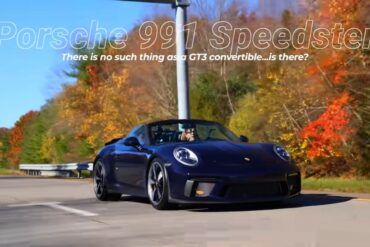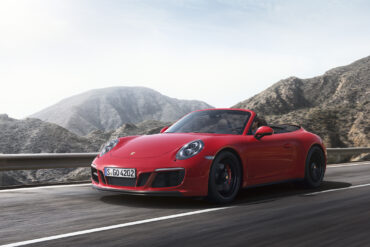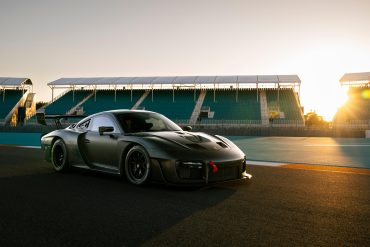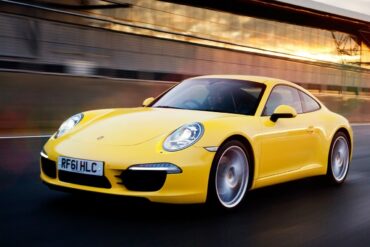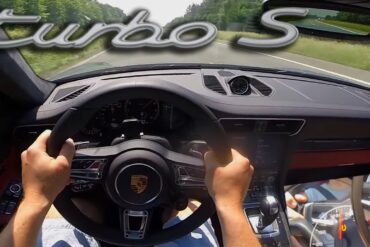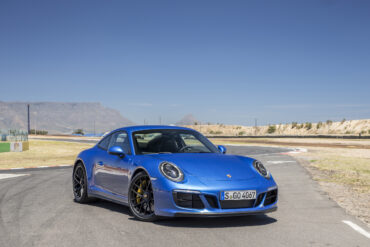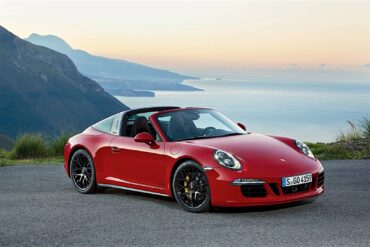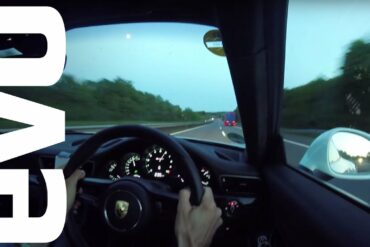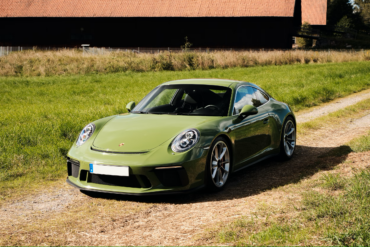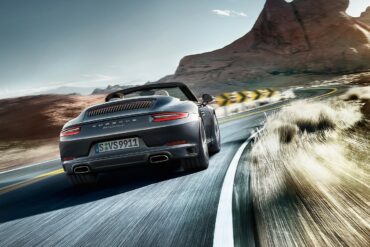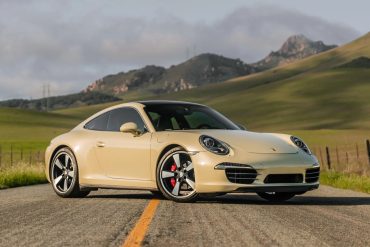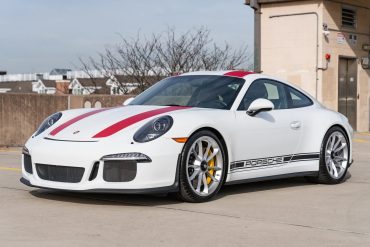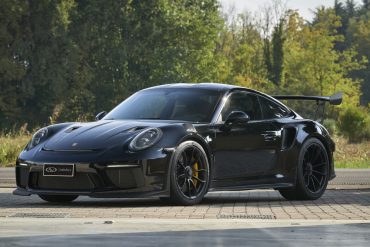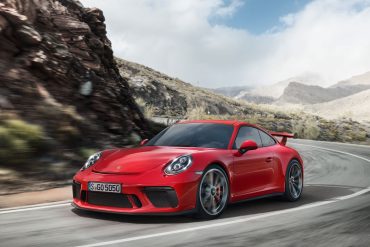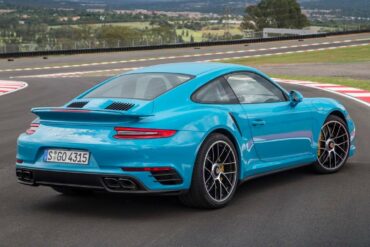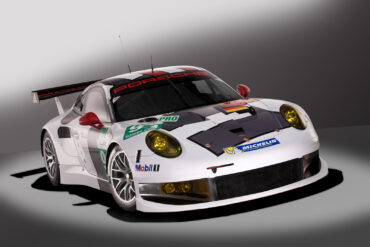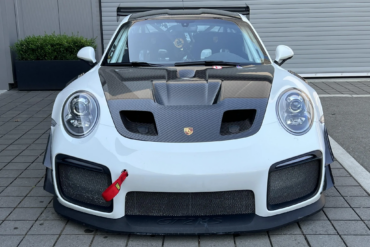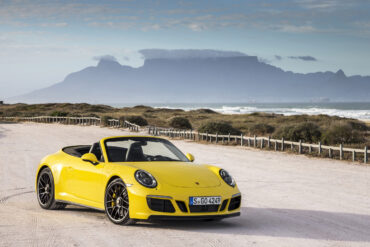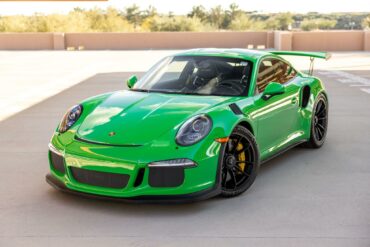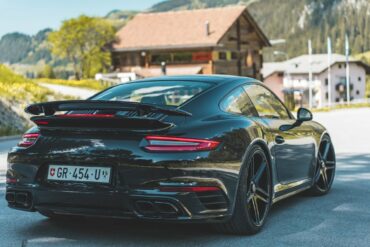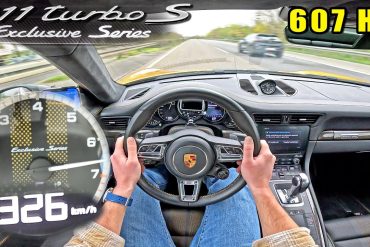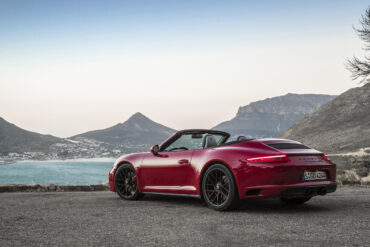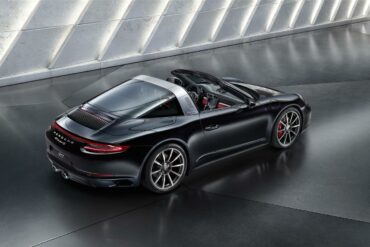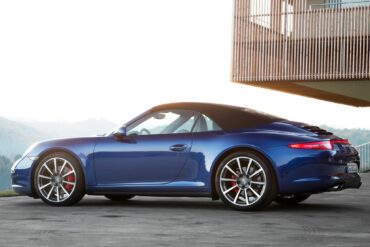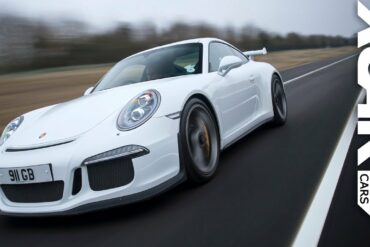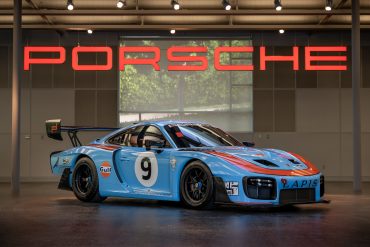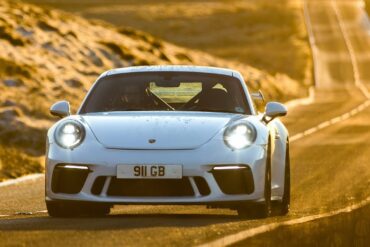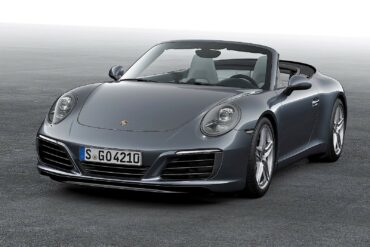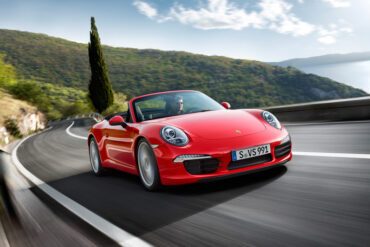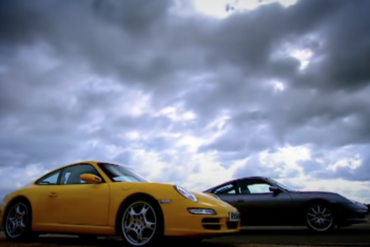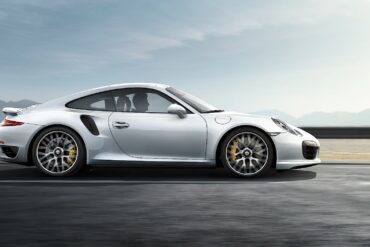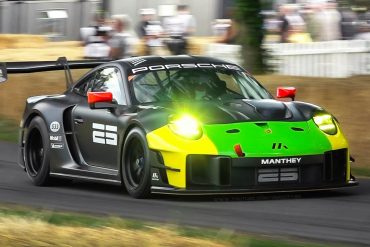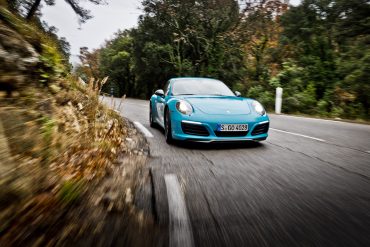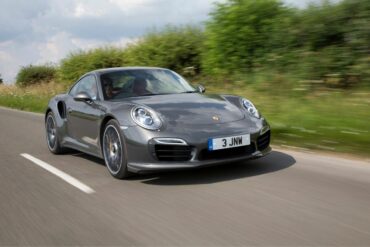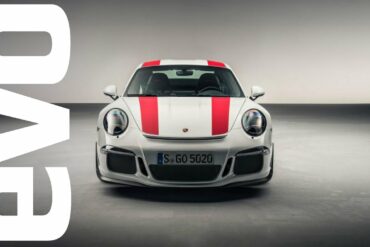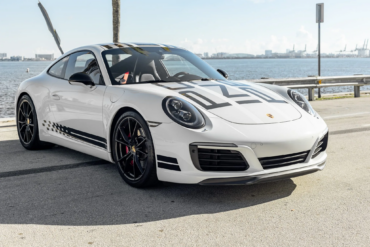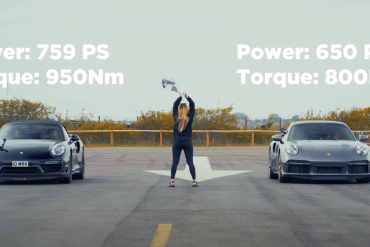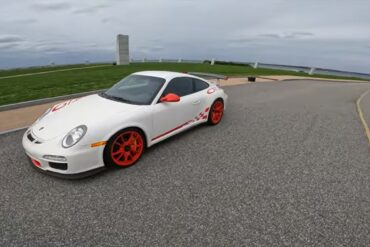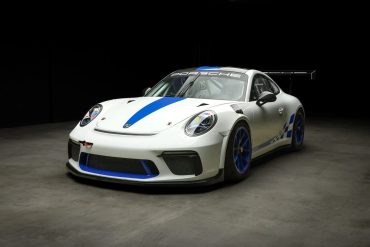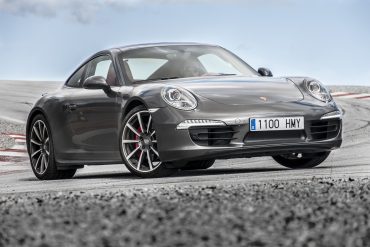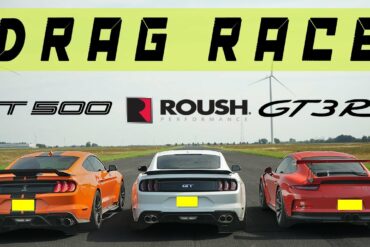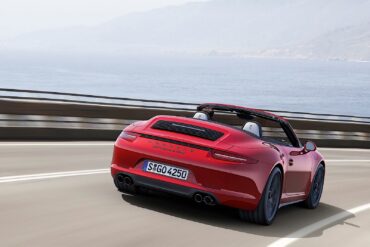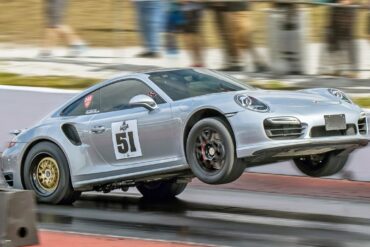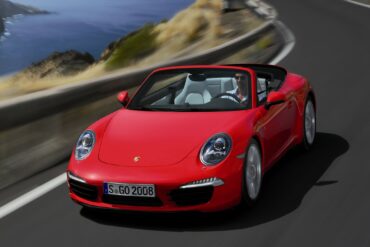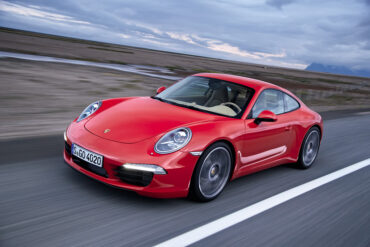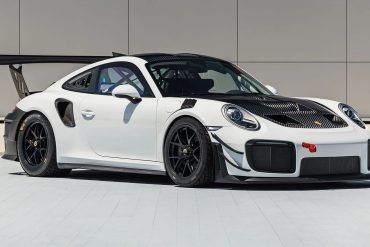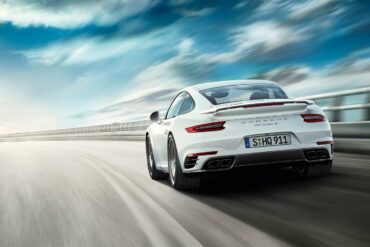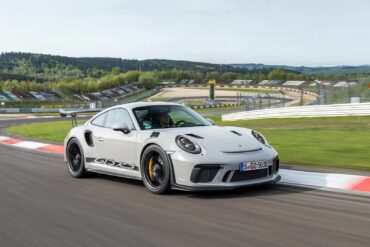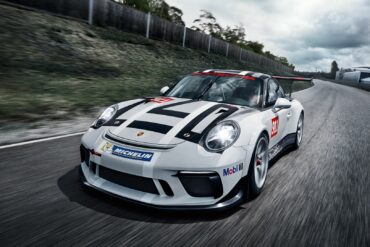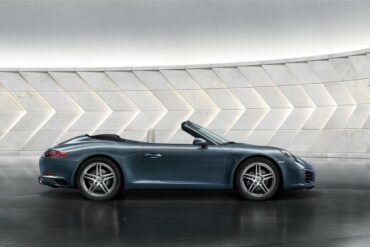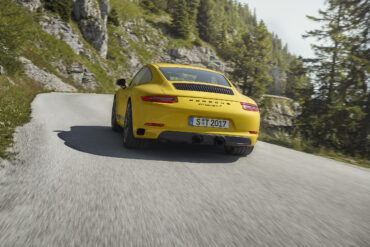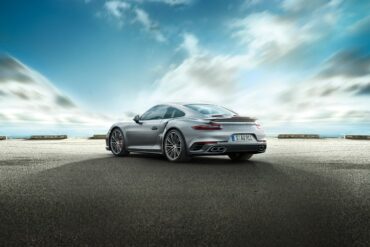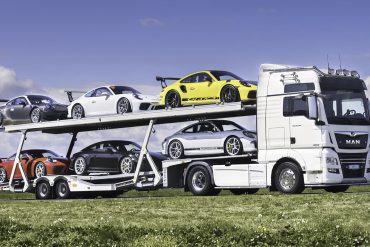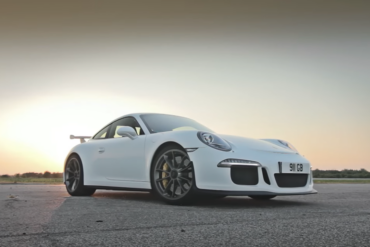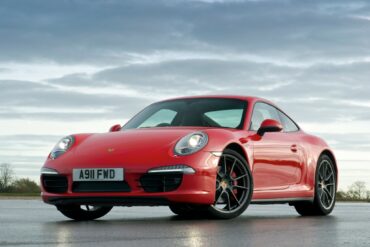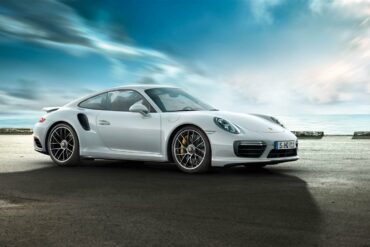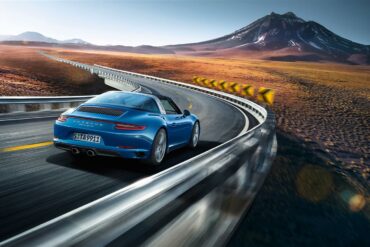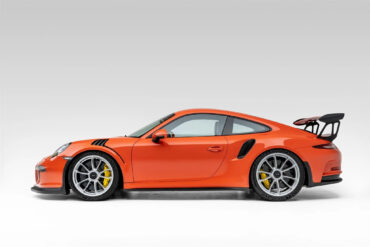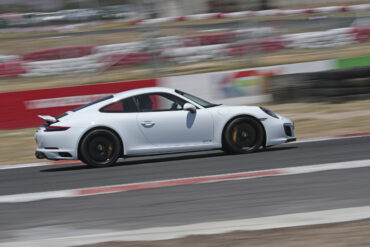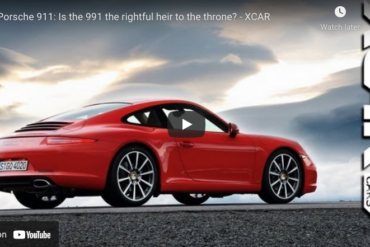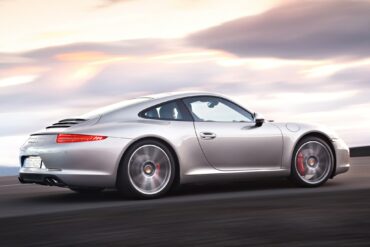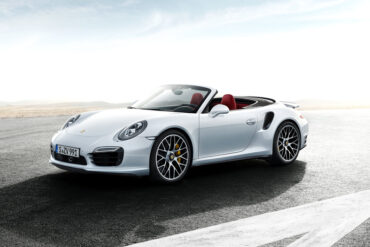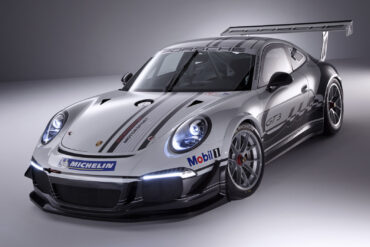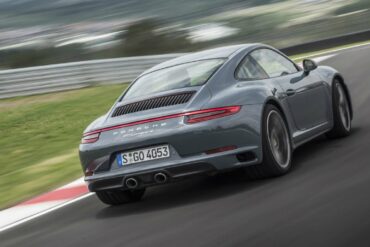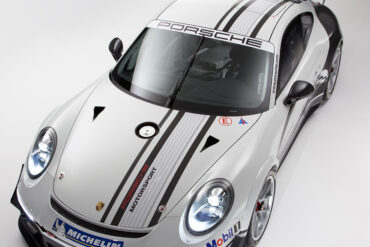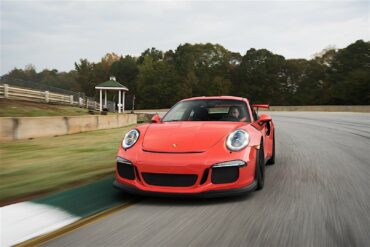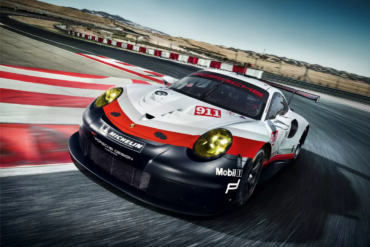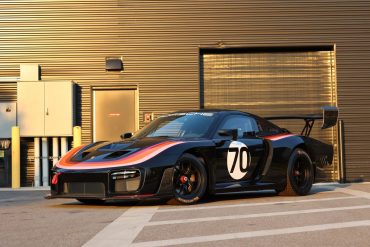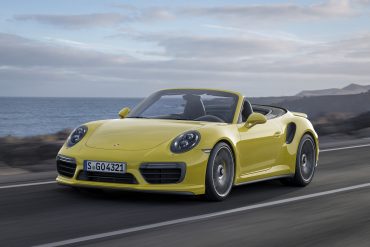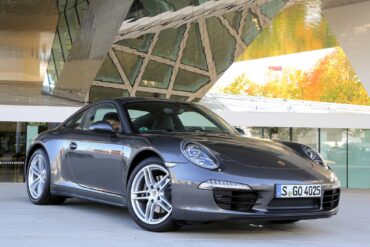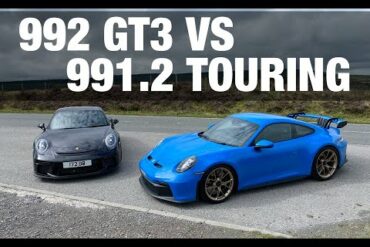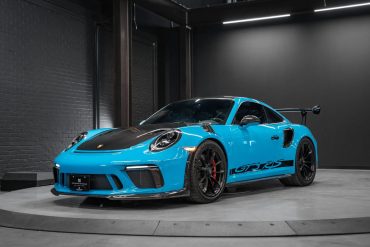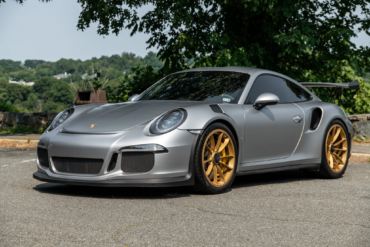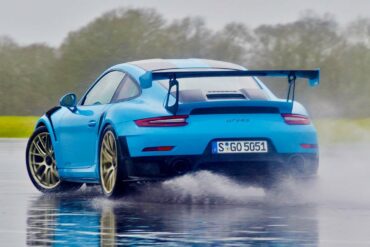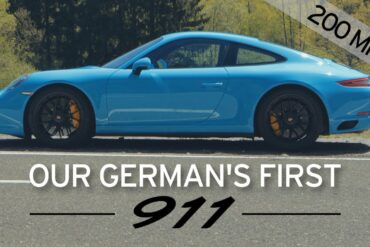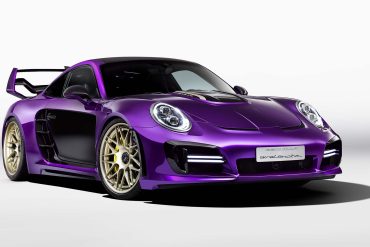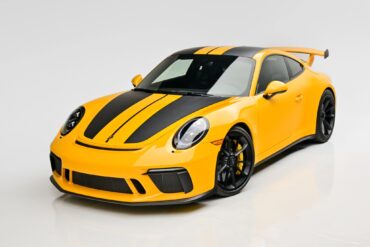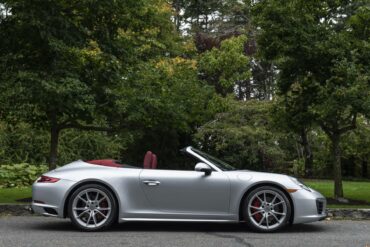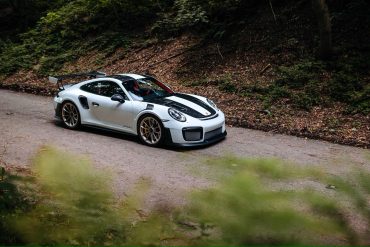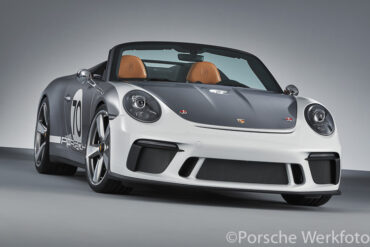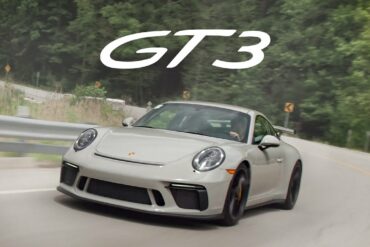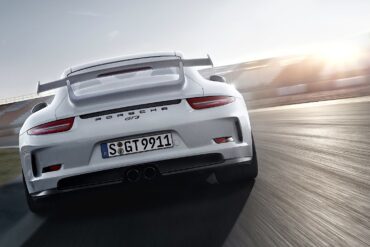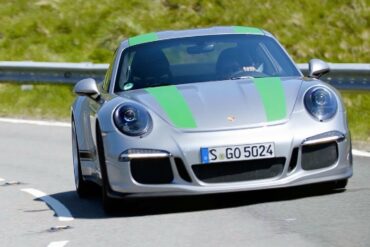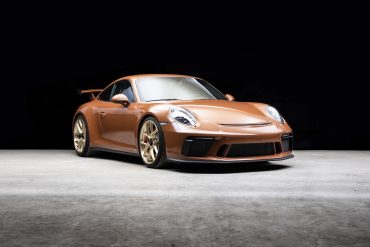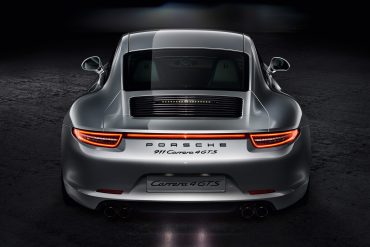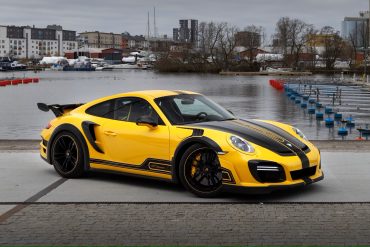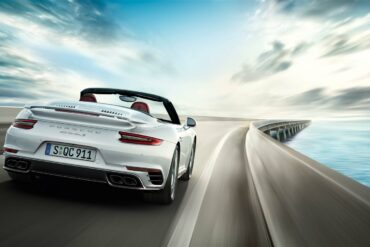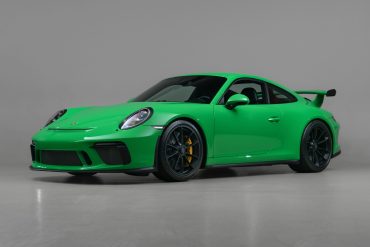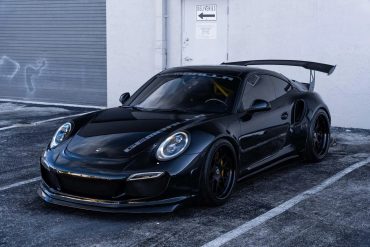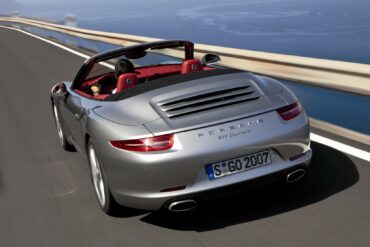Nick Murray delves into why the Porsche 991 Speedster is Porsche’s version of a cabriolet....
Porsche 911 (991)
The Type 991 911 series was the seventh generation of the iconic 911. The 991 generation models were unmistakably 911 in looks and design philosophy, but the 991 was really the ultimate evolution of Porsche 911s becoming highly technical, high quality and well built machines. Quality improved and the technology jump finally vaulted Porsche to the top of the automakers in terms of building the best cars on the planet. The Type 991 represented the most technically advanced 911 model to date and the 991 looked more powerful than any other 911 before – an effect that was heightened by the wider track and a stretched wheelbase. It also featured adaptive aerodynamics: the 911 was the first series sports car from Porsche to adopt this technology from the 918 Spyder hybrid super sports car. The 991.1 generation cars launched as MY 2012 cars. The 345hp 3.4 liter Carrera and 400hp 3.8 liter Carrera S launched first, in both Coupe and Cabriolet bodystyles and could be had with either rear and all-wheel drive drivetrains. The 991s all got electric power steering which took away some of the feel we were used to. The Carrera S got PASM standard (optional on the Carrera). The new Turbo (in coupe and cabriolet) came out in 2013, now with a whopping 512hp. See all of our Porsche 991 Research.
The GTS 4 Cabriolet reminds us how awesome Porsche cars are. This is a 911 that can be used as a regular car, an all weather convertible 911 that does everything really well. And when you want to push hard, the car transforms into a true sports car, a car that no enthusiast will ever complain about. Drop-top 911s have always played a supporting role to the fixed roof versions, but in GTS specification the Cabriolet is now better than ever.
Bonhams Cars will be offering a stunning 2019 Porsche 935 featuring a rare matte carbon finish. With just 44 miles...
2013 Porsche 911 Carrera S Coupe (991) Technical Specifications Engine Type Flat 6 Induction Normally-aspirated Cooling Water-cooled Valvetrain Four overhead camshafts,...
The Differences Between the 991.1 and 991.2 We have all seen these debates all over forums and Facebook groups countless...
2018 Porsche 911 Carrera 4 GTS (991.2) Technical Specifications Engine Engine layout Rear Engine Engine type Boxer, twin-turbo Cylinders 6 Valves...
2015 – 2016 Porsche 911 Targa 4 GTS Pictures & Gallery ...
Porsche 911 R 200 mph run The Porsche 911 R has 493bhp from a 4-litre naturally aspirated flat-six engine. Porsche claim a...
Porsche 911 GT3 (991.2) Manual Fun On this Special episode James and Thomas take a spin in the legendary Porsche...
Porsche has unveiled the 991-generation 911 GT3 with Touring Package at the 67th International Motor Show in Frankfurt. The car...
2017 Porsche 911 Carrera Cabriolet (991.2) Technical Specifications Engine Engine layout Rear Engine Engine type Boxer, twin-turbo Cylinders 6 Valves per...
The 2014 50th Anniversary Edition 911 was built by Porsche to commemorate the 911’s birthday, 50 years after its production...
The 2016 Porsche 911 R, arguably the purest form within the 911 model range, pays homage to the brand’s storied...
When automotive enthusiasts are asked to describe the pinnacle of the Porsche 911, the GT3 RS overwhelmingly dominates the conversation....
Porsche 911 Turbo S 992 v 991 Head To Head It’s the one you Porsche fanboys have been waiting for...
Porsche Option Codes – Porsche 911 (2018 Model Year) Looking to decode your 2018 Porsche 911 option codes? Want to...
Porsche 991.2 Turbo S Review The Porsche 991.2 Turbo S may be the world’s most well rounded car. It squeezes...
As the rules do not permit higher output engines, the engine for the 991 RSR was taken from the 997 GT3 RSR 4.0 and the development work focused on the chassis, body, aerodynamics and the gearbox. A wishbone front suspension replaced the McPherson struts used in 997. A new development was the lightweight gearbox. One of the priorities in the development was the more evenly balanced weight distribution. The centre of gravity was lower, too.
2019 was the last model year for the seventh-generation 911 (991) and for that Porsche introduced the GT2 RS Clubsport....
2017 Porsche 911 Carrera 4 GTS Cabriolet (991.2) Technical Specifications Engine Engine layout Rear Engine Engine type Boxer, twin-turbo Cylinders 6...
The Porsche 991 GT3 RS is a track-focused variant that was unveiled at the 2015 Geneva Motor Show. It introduced...
Tuned 911 Turbo S On the Road I am a big fan of the Cars With Luke channel and in...
With a limited production of just 500 units worldwide, the 991.2-generation Porsche 911 Turbo S Exclusive Series lives up to its new...
2017 Porsche 911 Carrera GTS Cabriolet (991.2) Technical Specifications Engine Engine layout Rear Engine Engine type Boxer, twin-turbo Cylinders 6 Valves...
2016 Porsche 911 Targa 4S (991.2) Technical Specifications Engine Engine layout Rear Engine Engine type Boxer, twin-turbo Cylinders 6 Valves per...
2013 Porsche 911 Carrera 4S Cabriolet (991) Technical Specifications Engine Type Flat 6 Induction Normally-aspirated Cooling Water-cooled Valvetrain Four overhead camshafts,...
They Tell Us Not to Worry. I Worry. Let’s See. The latest generation of GT3, the 991, is here and...
Porsche adeptly blends its vintage and contemporary vehicles to attract substantial investments from its affluent clientele. The 935, launched in...
Carfection Road Test of the New 991.2 GT3 Henry Catchpole gives the Porsche 991.2 911 GT3 a full road review...
A behind the scenes look of the filming of a Porsche GT3 MR, as they travel towards Corsica to fully...
The cylinder number and position (six, horizontal) remained the same as before, but the displacement has been reduced to 3.0 liters (from 3.4 liters) and a pair of turbos has been strapped on the engine. And thanks to the force-feeding’s high potential, the same 3.0-liter unit is used for the Carrera S as well (instead of the 3.8-liter flat-six). As a result, the power figures in the Carrera 2 Cabriolet gained 20 hp and some 40 lb-ft of torque vs the prior generation. More importantly, the turbocharging makes the Carrera’s 332 foot-pounds of torque available way quicker, from just 1,700 rpm.
Porsche is doubling the driving fun to be had from the new 911 Carrera by putting a Cabriolet alongside the Coupé. The debut of the new generation of the sports car classic is being followed only a few months later by the open-top models of the 911 Carrera and 911 Carrera S in the new 911 design. What the Coupé began with the new aluminium-steel body, the Cabriolet continues with the all-new, unique hood: As a result, the typical 911 roof line is initially retained in its entirety.
Jeremy takes the Porsche 911 Carrera S out for a spin Jeremy takes the Porsche 911 Carrera S out for...
2014 – 2016 Porsche 911 Turbo S (991) Pictures & Gallery ...
Watch this video by 19Bozzy92 YouTube channel featuring a Porsche 911 GT2 RS Clubsport 25, a special limited edition model...
2019 Porsche 911 Carrera T (991.2) Technical Specifications Make Porsche Model 911 Carrera Generation 2018 – Present Sub-Model Touring (T) Car...
Porsche 911 Spare Parts Catalogs (991, 2012 – 2019 Model Year) These official Porsche PET Diagrams and codes for the...
Porsche 911 R Driving Impressions Porsche 911 R – the tech, the stats, the ethos and the man. Henry Catchpole...
Designed and manufactured by Porsche Exclusive, also known as the ‘Special Wishes Department’, this department of the factory is dedicated...
In today’s video we watch a 992 Turbo S up against a tuned 991.2 Turbo S....
Vehicle Virgins just released a review on the manual Porsche 911 GT3 RS. Make sure to listen to the last...
Built as the second example in a limited production series of only five units for the year 2018, this GT3...
Porsche Option Codes – Porsche 911 (2013 Model Year) Looking to decode your 2013 Porsche 911 option codes? Want to...
Watch as the folks from Sam CarLegion YouTube channel pits a Ford Mustang GT500, a 2018 Ford Roush Mustang GT,...
2015 – 2016 Porsche 911 Carrera GTS Cabriolet (991) Pictures & Gallery ...
When you compare it to its rivals, the Porsche 911 Turbo might look tame. However, the 911 Turbo is definitely...
2012 – 2015 Porsche 911 Carrera S Cabriolet Pictures & Gallery ...
The seventh generation 911 was revealed 2011 Frankfurt Motor Show as an all-new model. It sports a longer wheel base, seven-speed gearbox and more efficient 3.4-liter flat-6. Major options include a 7-Speed automatic transmission , dynamic engine mounts and a Sport Chrono Package with a dash mounted analog stopwatch. This package also features a Sport Plus button that changes the settings of the chassis, engine and transmission for spirited driving. Launch Control is also new.
A remarkable and low mileage example of a Porsche 911 GT2 RS Clubsport, number 98 out of a limited production...
This 991.2-era 911 Turbo S has been extensively rebuilt and upgraded by MRP Performance in Spain into a bespoke one-of-one...
2018 Porsche 911 Turbo S (991.2) Technical Specifications Engine Engine layout Rear Engine Engine type Boxer, twin-turbo Cylinders 6 Valves per...
The latest version of the Porsche 935 made its official debut in the fall of 2018 at the Laguna Seca...
Matt Prior from Autocar nails the 991.2 GT3 RS: “While I don’t think the 3 communicates any better than a 2, the messages it does transmit are superior: you can feel that it’s lighter, more willing to turn, easier and more satisfying to ease onto the throttle and keep it pinned. It’s why this car is only a few seconds slower than a 2RS around the Nürburgring Nordschleife despite being almost 200bhp down.” He goes on... “And in the form of the GT3 RS it goes into creating - little by little, detail by detail - what might just be the best driver’s car currently on sale.”
The rear of the world’s most-produced GT racing car now houses a 4-litre, six-cylinder flat engine for even more drive. Thanks to thoroughbred motorsport technology, the compact engine with direct fuel injection delivers peak performance of 357 kW (485 hp). A range of innovative details also improve efficiency in addition to engine performance, ensuring even better durability of the naturally aspirated engine in racing mode and reduced maintenance costs.
2016 Porsche 911 Carrera Cabriolet (991.2) Technical Specifications Engine Engine layout Rear Engine Engine type Boxer, twin-turbo Cylinders 6 Valves per...
2018 – 2019 Porsche 911 Carrera T (991.2) Pictures & Gallery...
2019 Porsche 911 Turbo S (991.2) Technical Specifications Engine Engine layout Rear Engine Engine type Boxer, twin-turbo Cylinders 6 Valves per...
While we at Stuttcars are pretty jaded sharing news about special Porsches on a daily basis, it’s not often a...
A Thorough Review of the 991 GT3 The all-new 991-generation Porsche 911 GT3 faces its toughest challengers on road and...
Epic Track Battle. Which Is Faster? Since 2012 McLaren’s line-up has ballooned from one car to eight – and one...
2013 – 2015 Porsche 911 Carrera 4S Pictures & Gallery ...
2017 Porsche 911 Turbo S (991.2) Technical Specifications Engine Engine layout Rear Engine Engine type Boxer, twin-turbo Cylinders 6 Valves per...
2017 Porsche 911 Targa 4S (991.2) Technical Specifications Engine Engine layout Rear Engine Engine type Boxer, twin-turbo Cylinders 6 Valves per...
There are three very interesting low-mileage Porsches currently on offer at Bring a Trailer: 2016 Porsche 911 GT3 RS, a...
2017 Porsche 911 Carrera 4 GTS (991.2) Technical Specifications Engine Engine layout Rear Engine Engine type Boxer, twin-turbo Cylinders 6 Valves...
Carfection Reviews the New 991.2 Carrera S A new 911 is always something to pay special attention to. It’s the...
2012 Porsche 911 Carrera S Coupe (991) Technical Specifications Engine Type Flat 6 Induction Normally-aspirated Cooling Water-cooled Valvetrain Four overhead camshafts,...
Everything you need to know about the 991.1 Turbo S Cab comes from Car and Driver test results. "Launch control puts the computer in charge and sends the 3741-pound Turbo S Cab to the far side of 60 mph in just 2.8 seconds. A quarter-mile that nearly breaks into the 10s—11.1 seconds at 124 mph—attests to how serious this car gets when provoked. We saw 1.0 g on the skidpad and a stopping distance of 151 feet, both strong numbers abetted by the hilariously staggered Pirelli P Zeros (245/35 in front, 305/30 in back)". This is in a comfortable, all-wheel drive, grand touring convertible.
The new Porsche 911 GT3 Cup is powered by a 3.8-litre six-cylinder flat engine. It generates 460 hp (338 kW) at 7,500 revs, surpassing the predecessor by 10 hp. A six-speed dog-type gearbox developed by Porsche Motorsport which is operated via shift paddles at the steering wheel for the first time in a Porsche brand trophy race car transmits the power to the rear axle. The single piece race wheels with centre mount were also new.
2016 Porsche 911 Carrera 4 Coupe (991.2) Technical Specifications Engine layout Rear Engine Engine type Boxer, twin-turbo Cylinders 6 Valves per...
991 Carrera GT3 Cup Champions & Results 991 Carrera Supercup 2013 Nicki Thiim Sean Edwards Michael Ammermüller 2014 Earl...
2015 – 2016 Porsche 911 GT3 RS (991.1) Pictures & Gallery ...
Two decades after the different 911 GT1 cars the mid-engined 911 is back! In order to install a proper diffuser under the rear end of the 991, the engine had to make room for it and the engine/transmission unit was rotated 180 degrees. The extended rear diffuser, a top-suspended rear wing and the new side mirrors help to increase downforce with reduced drag. The FIA rules meant no turbo was needed due to power limits, so the normally aspirated 4-litre flat-6 was taken from the 991 GT3 R.
The latest version of the Porsche 935 made its official debut in the fall of 2018 at the Laguna Seca...
This is the fastest convertible GT you can buy. The Turbo S cab gets 572 bhp (39 hp more than the base turbo cab) and 553 ft lbs (9 ft lbs more than the regular cab) of torque. With the Turbo S, the PDCC Porsche Dynamic Chassis Control hydraulic roll bars came as standard. The PCCB Porsche Ceramic Composite Brakes had been standard on the Turbo S already since the 996 generation. New options included the radar-based lane change assist and a lift system for the front axle (increased ground clearance by 1.6″/40 mm). The PCM now had a multi-touch screen like in the facelifted 991 Carrera.
2013 Porsche 911 Carrera 4 Coupe (991) Technical Specifications Engine Type Flat 6 Induction Normally-aspirated Cooling Water-cooled Valvetrain Four overhead camshafts,...
Old vs New GT3 Showdown Great hands-on review and comparison between two of our favorite 911s. A Porsche 911 992...
Bring A Trailer is currently auctioning a 2019 Porsche 911 GT3 RS that comes with the highly sought-after and expensive...
Porsche’s now famous RS moniker that was introduced in 2015, once again blurs the boundary between road-going sports cars and...
Porsche 991 GT3 RS on road and track Looks like a 911, drives like a hypercar? The Porsche 911 GT2...
Is this the greatest Porsche drag race of all time? You know what, we think it just might be!...
Top Speed In a Porsche 911 GTS German correspondent Thomas Hellmanzik gets his first 911 driving experience, and promptly hits...
The car you’re looking at is the Gemballa Avalanche. Boasting a Formula 1 inspired aerodynamics and a 3.8-liter turbocharged 820hp...
Live on Bring A Trailer is an exquisite 2019 Porsche 911 GT3, boasting a mere 1,600 miles on its odometer....
2018 Porsche 911 Carrera 4S Cabriolet (991.2) Technical Specifications Engine layout Rear Engine Engine type Boxer, twin-turbo Cylinders 6 Valves per...
The rear-engine, rear-wheel drive GT2 RS celebrated its official world premiere at the Goodwood Festival of Speed in the UK...
Born on 8 June 1948, the Porsche 356 No.1 was presented to the world, immediately setting standards by which the...
One of the BEST Sportscars Money Can Buy We go for a drive in the 2018 Porsche 911 GT3. Our...
2016 Porsche 911 GT3 (991) Technical Specifications type Series Production Car released at 2013 Geneva Motor Show built at Stuttgart, Germany...
Drivers Cars & What Makes Them So Special Chris Harris compares and contrasts the Porsche 911R and the Peugeot 205...
Porsche’s 911 GT3 of the 991.2 generation incorporated several improvements over its predecessor. Responding to the demands of its loyal...
The Porsche 911 GT3 Touring Is Perfect Does it get much better than this for a supercar that offers so...
2015 Porsche 911 Carrera 4 GTS (991) Technical Specifications Engine layout Rear Engine Engine type Boxer-6 Cylinders 6 Valves per...
TechArt has fully upgraded this 991.2-generation Porsche 911 Turbo S to GTStreet R specification. The rear engine lid houses a...
Head to Head Mercedes-AMG GT C vs Porsche 911 Carrera T For the road, the GT C is the best...
2018 Porsche 911 Turbo S Cabriolet (991.2) Technical Specifications Engine Engine layout Rear Engine Engine type Boxer, twin-turbo Cylinders 6 Valves...
The 991.2 generation of Porsche’s 911 GT3 marked a significant improvement over its predecessor, incorporating several desirable changes. Responding to...
The 2015 Porsche 911 Turbo S coupe, finished in Jet Black Metallic, has been equipped with a Gemballa GT Concepts...
Reviewing The Purist Porsche We go for a drive in the 2018 Porsche 911 Carrera T Manual and PDK....
2012 – 2015 Porsche 911 Carrera Cabriolet Pictures & Gallery...


